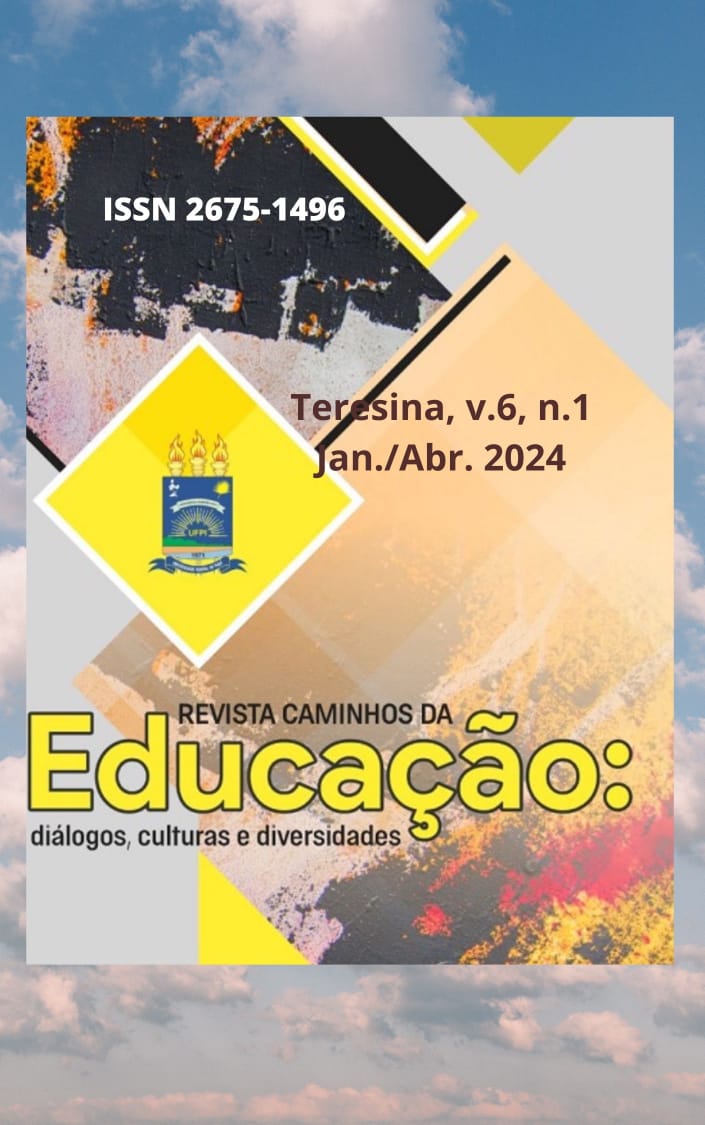ORGANIZAÇÃO DOS SONS NO AMBIENTE ESCOLAR: ENTRE PAISAGENS, PASSEIOS E MAPAS
DOI:
https://doi.org/10.26694/caedu.v6i1.5826Keywords:
Sound environment, Sound organization, Sound map, Goup TeenagersAbstract
This article discusses the process of perception of the soundscape, cataloging and creation of maps by a group of teenagers in the context of a private school in the city of XXXXXXXXXX, XXXXXX school in the year 2021. The subject group comprised 20 young people aged 13 years old. It was proposed as specific objectives: make a bibliographic study involving researchers (SCHAFER, 2001, 2011 and 2019; VERTAMATTI, 2008; RODRIGUES, 2016) who have been dedicating to the soundscape and their organization; investigate the sound events from the school organization verifying the relationship between the adolescent’s group establishes with the environment and the sound. The collected data analysis indicated when cataloging the sounds, organizing them and building the sound map, the adolescent’s group expressed themselves in order to externalize their feelings and opinions.
Downloads
References
CHIZZOTTI, A. Pesquisa qualitativa em ciências humanas e sociais. Editora Vozes. Petrópolis, RJ, 2006.
DEMO, P. Pesquisa Participante: mito e realidade. Editora Senac. Rio de Janeiro, 1984.
FONTERRADA, M. T. de Oliveira. De tramas e fios: um ensaio sobre música e educação, v. 2. São Paulo Editora UNESP, Rio de Janeiro, 2008.
RODRIGUES, P. S. A paisagem sonora da sala de aula: escuta e criação, desenvolvimento da compreensão musical e da consciência sobre ecologia acústica. 2016.Dissertação (Mestrado Profissional Prof-Artes) – Universidade Estadual Paulista, Instituto de Artes.
SCHAFER, R. M. A Afinação do mundo (Marisa Trench Fonterrada, Trans.). Editora UNESP. São Paulo, 2001.
______. O ouvido pensante. Tradução de Marisa Trench de O. Fonterrada, Magda R. Gomes da Silva, Maria Lúcia Pascoal; revisão técnica de Aguinaldo José Gonçalves. 2.ed. Editora Unesp. São Paulo, 2011.
______. Vozes da tirania: Templos do silêncio. Editora UNESP. São Paulo, 2019.
SILVA, D. M. C. W. Conexões entre o comportamento dos adultos presentes nas aulas de música e o desenvolvimento musical dos bebês nos dois primeiros anos de vida. 2018. Dissertação (Mestrado - Programa de Pós Graduação em Música) Universidade Federal de Minas Gerais - UFMG
THIOLLENT, M. Metodologia da pesquisa-ação. 10 ed. Revista: Cortez. São Paulo, 2000
VERTAMATTI, L. R. G. Ampliando o repertório do coro infanto-juvenil: um estudo de repertório inserido em uma nova estética. Editora UNESP, 2008.
ZANFORLIN, Sofia Cavalcanti. Da diáspora às etnopaisagens: diversidade e pertencimento nas migrações transnacionais. MATRIZes, v. 10, n. 3, p. 189-202. São Paulo, 2016. Disponível em: https://www.redalyc.org/pdf/1430/143049794013.pdf. Acesso em 01 jun. de 2022.



















